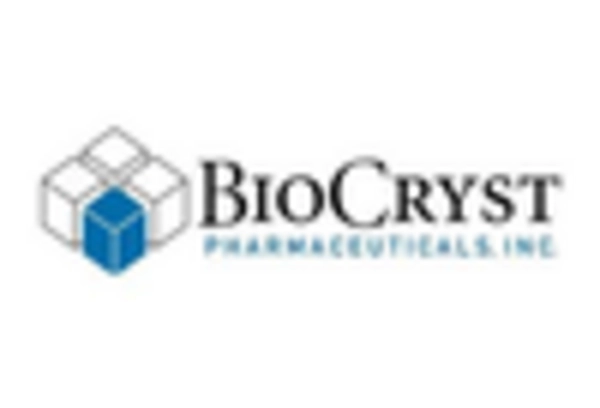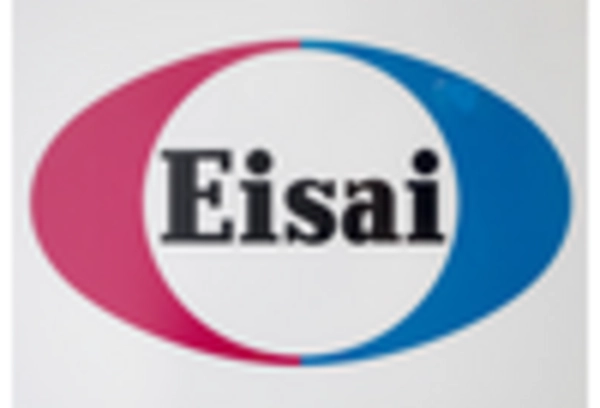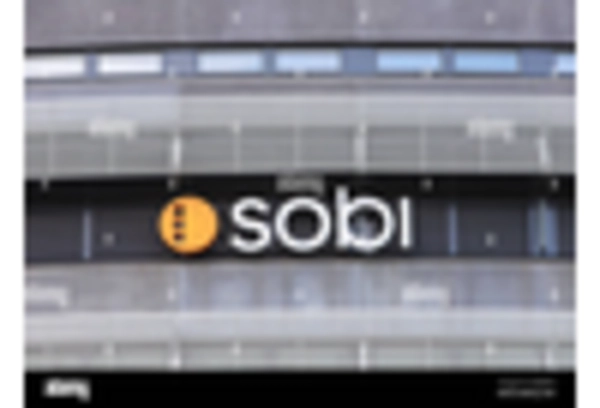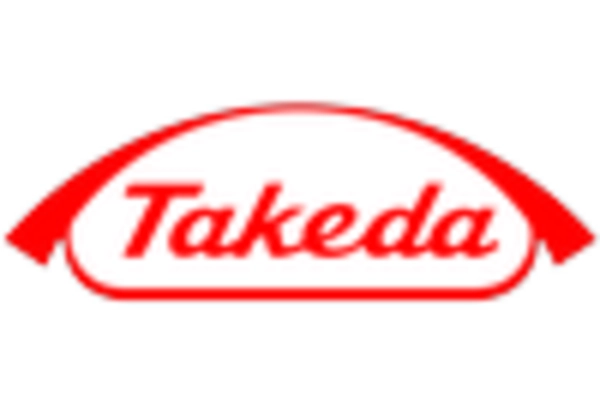Increased Research Funding
The allocation of research funding for bradykinin mediated angioedema is a critical driver for the Bradykinin Mediated Angioedema Market. Government and private organizations are increasingly investing in studies aimed at understanding the underlying mechanisms of angioedema and developing effective treatments. This influx of funding is expected to accelerate the pace of innovation, leading to the discovery of new therapeutic agents. Furthermore, as research progresses, the identification of novel biomarkers may enhance diagnostic accuracy and treatment efficacy. The commitment to advancing knowledge in this field is likely to bolster the growth trajectory of the Bradykinin Mediated Angioedema Market.
Rising Incidence of Angioedema
The increasing prevalence of bradykinin mediated angioedema is a notable driver for the Bradykinin Mediated Angioedema Market. Recent studies indicate that the incidence of hereditary angioedema is approximately 1 in 50,000 individuals, while acquired forms are becoming more recognized. This rise in cases necessitates effective treatment options, thereby propelling market growth. As awareness of the condition expands, healthcare providers are more likely to diagnose and treat patients, further contributing to the market's expansion. The growing patient population is expected to drive demand for innovative therapies, which may lead to increased investments in research and development within the Bradykinin Mediated Angioedema Market.
Growing Patient Advocacy Groups
The emergence of patient advocacy groups dedicated to bradykinin mediated angioedema is fostering awareness and support within the Bradykinin Mediated Angioedema Market. These organizations play a pivotal role in educating patients and healthcare professionals about the condition, thereby promoting timely diagnosis and treatment. Their efforts in raising awareness can lead to increased demand for therapies, as more individuals seek medical assistance. Additionally, these groups often collaborate with pharmaceutical companies to facilitate clinical trials, which can expedite the development of new treatments. The influence of patient advocacy is likely to enhance the visibility of the Bradykinin Mediated Angioedema Market.
Advancements in Therapeutic Options
Innovations in therapeutic approaches for bradykinin mediated angioedema are significantly influencing the Bradykinin Mediated Angioedema Market. The introduction of novel therapies, such as C1-inhibitor replacement therapies and bradykinin receptor antagonists, has transformed treatment paradigms. These advancements not only improve patient outcomes but also enhance the overall market landscape. For instance, the approval of new drugs has led to a surge in treatment options, catering to diverse patient needs. As the market continues to evolve, the development of targeted therapies is likely to attract further investment, thereby fostering growth within the Bradykinin Mediated Angioedema Market.
Regulatory Incentives for Drug Development
Regulatory bodies are increasingly providing incentives for the development of treatments for bradykinin mediated angioedema, which serves as a significant driver for the Bradykinin Mediated Angioedema Market. Initiatives such as orphan drug designations and fast-track approvals are designed to encourage pharmaceutical companies to invest in this niche market. These regulatory frameworks not only reduce the time and cost associated with bringing new therapies to market but also enhance the attractiveness of the sector for investors. As more companies enter the market, the competitive landscape is likely to evolve, leading to a broader array of treatment options for patients suffering from bradykinin mediated angioedema.

















Leave a Comment